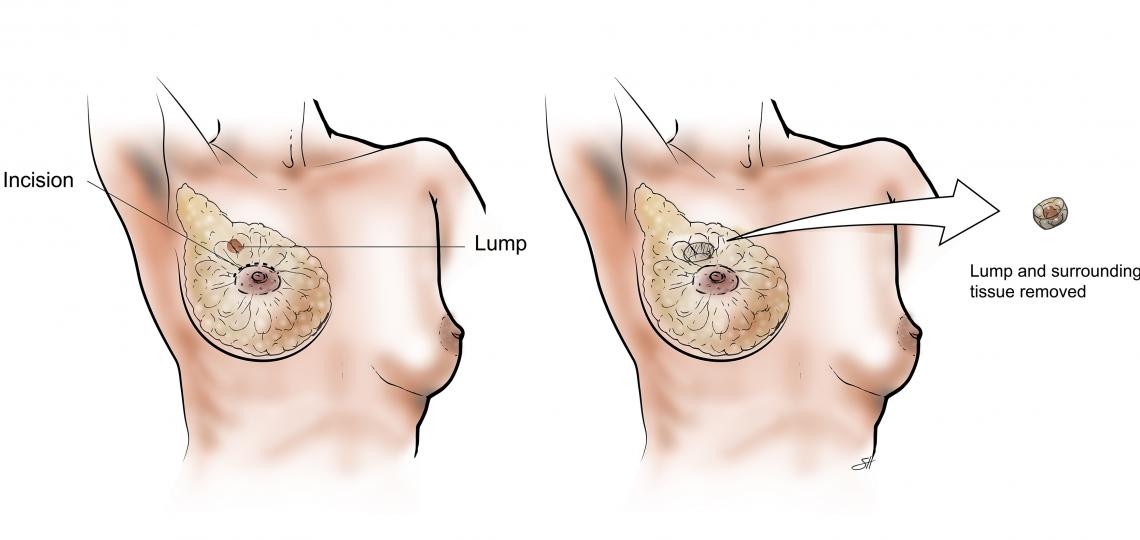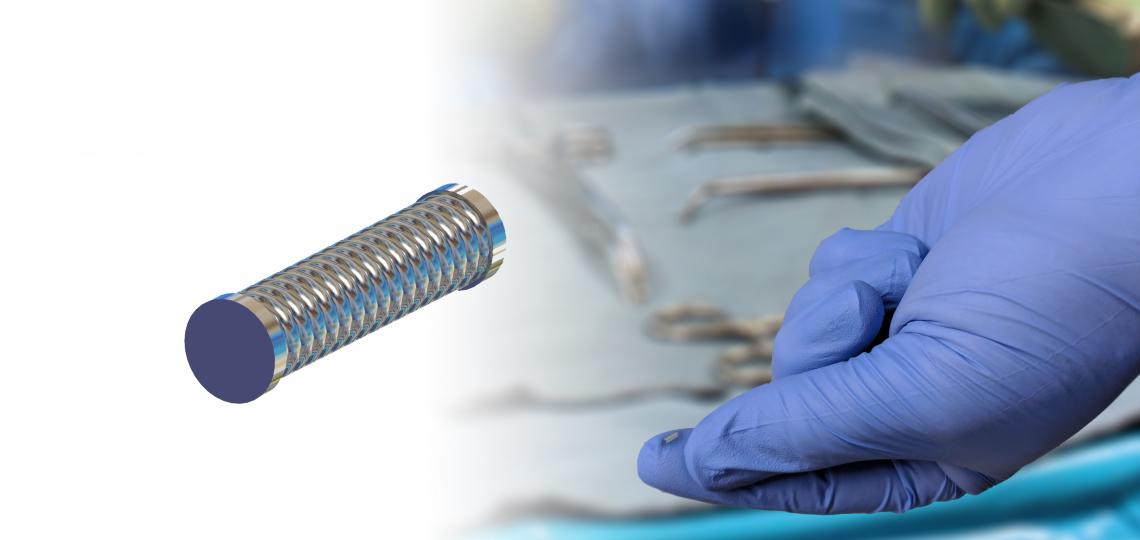Lumpectomy or incisional biopsy
Lumpectomy is surgical procedure to remove an abnormal “lump” or tumor from the breast. Lumpectomy is also called breast-conserving surgery, because during the operation, the breast cancer tumor along with a rim of healthy surrounding tissue is removed, while as much of the remaining breast tissue as possible is conserved. Lumpectomy is also sometimes termed, confusingly, a "segmental mastectomy" or a wide local excision.
If the lump being removed is non-cancerous, such as a fibroadenoma (a benign tumor in the breast), the procedure is often called an excisional breast biopsy instead of a lumpectomy.
Who is a candidate?
Lumpectomy is generally suitable for patients with smaller breast lumps, early stage breast cancer, or for patients who have gone through other therapy methods to shrink a tumor in the breast. Overall, lumpectomy is a smaller surgery than a mastectomy with an equal cure rate. If the area of the cancer is too large or if it is more advanced, a patient may not be a candidate for lumpectomy.
Before the procedure: Tumor localization
When the lump is too small to be felt but can be seen on an imaging test, doctors will perform a localization procedure to pinpoint precisely where the tumor lies. This helps the surgeon know exactly where the surgery needs to be performed.
To localize the cancer, a radiologist will use a mammogram or ultrasound to place one or more wires or a rice grain sized metal “seed” in or near the abnormal breast area. This wire or seed then guides the surgeon to remove the correct breast tissue.
A rice grain sized metal “seed” is placed near the abnormal breast area
During the procedure
Lumpectomy is usually done as an outpatient procedure and takes about one hour to complete. Before the procedure, the patient is put under general anesthesia, which means the patient is asleep and feels no pain. The patient may also be put under local anesthesia, which means the patient is awake but sedated. A combination of the two types of anesthesia is also an option.
During the procedure, a specialist breast surgical oncologist makes an incision on the breast and removes the cancer and some of the healthy surrounding breast tissue. The sample is X-rayed and then sent to a pathologist for further evaluation and testing. The pathologist may also choose to order other laboratory tests. The specimen is said to have “clear margins” if no cancer is found around the borders of the removed tissue.
Under the same anesthesia, the surgeon may remove lymph nodes in the patient's armpit (axilla) to see if cancer has spread there. Those tissue specimens are also sent to the pathologist for testing.
During a lumpectomy procedure, the surgeon will mark the area that was excised using metal clips. These clips allow the doctors to see the exact location of the lumpectomy on future mammograms and may also be used to target future radiation treatment. The surgeon closes the breast lumpectomy site and the skin with stitches (which are usually self-dissolving). A drain tube is usually not required after a lumpectomy.
Why the procedure is performed
Most often, surgery is the first step in breast cancer treatment, but it can also follow other types of therapy, which may be used to shrink the tumor first.
Sometimes it is not easy to decide whether a lumpectomy or mastectomy is the best surgery in a given circumstance. Inevitably, it is a decision that the patient and the care team decide together.
Among other considerations, the doctor and patient will review the size and location of the tumor, whether there is more than one tumor, how much of the breast is taken over by the cancer, the shape and the size of the breasts, the general health and age of the patient, as well as the patient's family history.
After the procedure
The recovery from a lumpectomy is relatively short, and a simple over the counter pain medication such as Tylenol usually suffices for pain.
Within a week after surgery, the incision heals, and there may be some bruising. It is important that the patient take care of the incision area, changing dressings and watching for indicators of infection such as redness, drainage or swelling in the weeks following the surgery.
Within two weeks, most patients are able to return to regular activity, avoiding strenuous exercise, heavy lifting or any other movement that causes pain to the surgical area. Many women find it helpful to wear a comfortable and supportive bra in the weeks after surgery.
Lumpectomy is usually followed by radiation therapy and additional treatment such as chemotherapy, hormone therapy, or both. Outcomes generally depend on the nature of the tumor and how it responds to treatment as well as whether or not the cancer has spread to the axillary lymph nodes (nodes in the armpit). Breast reconstruction is not necessary after lumpectomy.








 Credit
Credit

